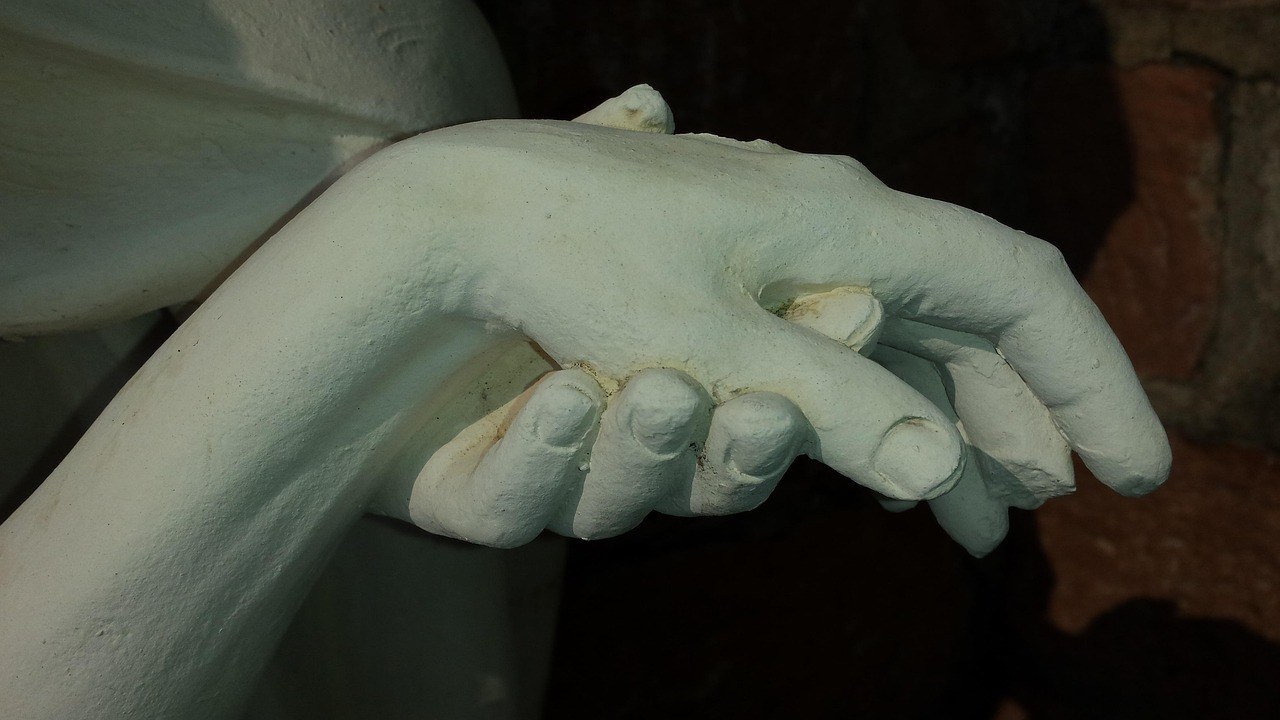You don’t need a spotlight or a dramatic entrance to shape a powerful first impression – you need awareness, intention, and a few well-chosen behaviors. Imagine the opening notes of a song that instantly hooks you; in social life, those early seconds work the same way. People rapidly assemble a picture of who you are, and that sketch often guides how they’ll interpret everything that follows. The good news is that this isn’t about acting – it’s about aligning your natural strengths with how human attention and memory work, so your first impression feels effortless and genuine.
Why those first seconds loom large
When two strangers meet, the brain hunts for shortcuts – patterns, cues, previous experiences – to predict what comes next. That quick categorization helps us navigate a complicated world, but it can also lock in expectations. A warm tone, an open stance, and a relaxed smile can tilt the mental scales toward trust, while a rushed greeting or a distracted glance can nudge them the other way. Understanding these tendencies doesn’t mean you become a scripted version of yourself; it simply means you steer the moment so your first impression reflects who you truly are.
Think of this as curating the frame around a painting. The art is you; the frame is the atmosphere you set in the first beats of contact. A clear frame – steady posture, attentive eyes, a calm voice – helps the other person perceive the art without noise. That’s the heart of a dependable first impression.

The psychology in plain language
Several familiar mental habits shape how we meet people. Our minds like to connect dots quickly – one visible strength can glow outward and brighten the rest of the picture. Likewise, beliefs formed in the first minute can influence how both parties behave, which then reinforces the original judgment. It’s a loop. You can use that loop wisely: select a signal you’re proud of and let it lead the way, so your first impression sets off a chain reaction that benefits both sides.
It also helps to remember that attention is limited. If your gestures, words, and tone compete, the other person must work harder to understand you. When your nonverbal cues support your message, your first impression becomes clearer and easier to trust.
Setting the stage before you speak
Long before you introduce yourself, you’re communicating. Clothing, grooming, and punctuality announce priorities. You don’t need designer anything – you need congruence. Choose an outfit that fits the context and feels comfortable, then wear it with ease. Arriving on time does more than signal reliability – it gives you a quiet minute to breathe, look around, and place your attention where it belongs. That composure shows up in your first impression without a word.

Your environment can help. If you can, position yourself where conversation feels natural – enough light to read expressions, not too much noise, chairs angled for easy eye contact. Small details reduce friction and make a friendly first impression more likely.
Signals that consistently work
Easy posture and open angles. Stand or sit tall without stiffness. Keep shoulders loose and hands visible. A relaxed stance invites conversation and reduces perceived threat – the foundation of a smooth first impression.
Genuine smile. Think warm, not flashy. A brief smile synchronized with eye contact sets a cooperative tone and makes your first impression feel human rather than rehearsed.

Attentive eyes. Hold eye contact a beat longer than default, then check in again as they speak. This rhythm signals presence and builds a trustworthy first impression.
Measured voice. Start slightly slower than your usual pace. Clear articulation and calm volume convey confidence and help your first impression land without strain.
Purposeful greeting. If a handshake is appropriate, keep it brief and steady. Pair it with their name and a straightforward line like, “Good to meet you.” Names anchor memory – a small advantage for your first impression.
Conversation that creates connection
Words can accelerate rapport when they honor curiosity and comfort. Start with topics that are easy to answer – the setting, a shared interest, something specific you appreciate about the moment. These small doors open to bigger rooms. Once the conversation warms, ask questions that highlight values and preferences rather than extracting a résumé. You’ll discover stories, and stories make a lively first impression.
Openers that lower the guard
Low-friction questions. Offer prompts that invite short answers first: “What drew you to this event?” or “How do you know the host?” Instead of cornering, you’re guiding – and your first impression benefits from that ease.
Listen for energy. Notice where their voice lifts. Follow up there: “You lit up when you mentioned that project – what made it fun?” Responding to energy shows attunement, strengthening your first impression as considerate and engaged.
Share, don’t perform. Sprinkle personal details that reveal interests or recent experiences without turning the moment into a monologue. This balance keeps your first impression grounded and approachable.
Find a common thread. If you uncover shared tastes – a band, a sport, a neighborhood café – name it. Common ground is the shortest route to a memorable first impression.
Use light humor judiciously. A quick, kind observation can release tension. Keep jokes inclusive and gentle so your first impression feels warm, not showy.
Nonverbal fluency without overthinking
Body language is a chorus – hands, eyes, head tilts, posture – and it sounds best when it’s coordinated. A nod paired with “that makes sense” lands better than either alone. If you tend to fidget, give your hands a constructive job – hold a glass lightly or rest fingertips together. These small adjustments preserve a calm first impression.
Mirroring can help – softly matching pace, tone, or posture – but subtlety matters. Overdo it and it looks theatrical. Aim for harmony, not imitation, so your first impression reads as natural.
Practical etiquette that travels well
Punctuality as respect. Being on time protects everyone’s energy. It says, “I value this.” That message is part of every strong first impression.
Clean, simple, intentional. Basic grooming, fresh breath, and restrained fragrance are quiet courtesies that echo long after the introduction – your first impression becomes comfortable instead of overwhelming.
Names and details. Use their name once or twice, then connect it to something they shared. That tiny thread weaves memory into your first impression.
Compliments that notice effort. Appreciate specifics – the venue they chose, the clarity of an explanation, the creativity of a project. Precision keeps compliments from sounding generic and sharpens your first impression.
Boundaries and space. Read distance, pace, and touch norms for the setting. When in doubt, err on the side of spaciousness. Respectful awareness upgrades any first impression.
Pitfalls that quietly sabotage connection
Some habits erode goodwill even when intentions are positive. Anticipating these traps lets you steer around them without drama – preserving the clarity of your first impression.
Common missteps to avoid
Overconfidence masquerading as charm. Inflating your abilities or telling exaggerated stories can land as brittle. Confidence with restraint is sturdier – and your first impression will feel more believable.
Negativity that sticks. Complaints pull attention like magnets and overshadow everything else. Keep critiques brief and balanced so your first impression doesn’t wear a gray cloud.
Trying too hard to impress. Rapid-fire achievements or relentless self-promotion can backfire – it signals insecurity. Let curiosity do the heavy lifting and your first impression stays elegant.
Oversharing personal turmoil. Candor builds trust, but pace matters. Offer depth gradually so your first impression feels steady, not overwhelming.
Jokes without consent. Humor aimed at sensitive topics or at the other person can fracture rapport. Choose warmth over edge to safeguard your first impression.
Divided attention. Glancing at your phone mid-conversation announces, “Something else matters more.” Protect presence – it’s the backbone of a respectful first impression.
Mechanical mirroring. Copying gestures beat-for-beat can feel eerie. Use adaptive alignment instead, keeping your first impression human and flexible.
Emotions that spill. Stress, agitation, or urgency can transfer quickly. Slow your breathing and let silence do some work – your first impression will feel calmer.
Assuming the spotlight. Most people are less focused on you than you fear. Relaxing into that reality loosens tension and brightens your first impression.
Words that clash with actions. If you describe yourself as adventurous yet dodge every new idea, people sense the mismatch. Aligning talk and behavior stabilizes your first impression.
Overcorrecting natural tendencies. Pushing far beyond your baseline – ultra-chatty, ultra-bold – can feel off-key. Gentle adjustments preserve authenticity and a credible first impression.
Boundary blunders. Uninvited touch or probing questions can freeze rapport. Let the other person set the pace so your first impression remains safe and welcoming.
Snap judgments. Deciding too quickly about someone else can leak through your face and tone. Staying curious keeps the door open and elevates your first impression.
Making your strengths do the talking
People remember a highlight – a single clear quality that stands out. Choose one strength you want to be noticed first: perhaps clarity, kindness, or enthusiasm. Then allow that quality to color your choices. If clarity is your pick, speak in clean sentences and summarize what you heard. If kindness is your north star, show it through small courtesies – letting others finish, acknowledging effort. If enthusiasm fits, bring bright attention without steamrolling. This focus prevents clutter and ensures your first impression lands where you intend.
Social proof operates quietly here. When you mention a collaborative win or a shared achievement, you’re signaling that others enjoy working with you – a subtle reinforcement that strengthens your first impression. You’re not bragging; you’re giving context.
Timing, pacing, and the power of pauses
Pace is a lever. Beginning a touch slower makes room for names to register and tension to drop. From there, match the other person’s rhythm – not perfectly, just enough to feel in step. Strategic pauses let important points breathe, and they offer space for the other person to join. Silence isn’t empty – it’s connective tissue. Used well, it deepens your first impression.
Practical mini-scripts that feel natural
Use these flexible lines as scaffolding, then adapt the words to your voice. Each option keeps attention on connection while supporting a clean first impression.
Opening at a social event. “Hi, I’m Alex – I’ve been curious about how this meetup runs. What brought you here?” Short, friendly, and easy to answer – it tilts the room toward conversation and a confident first impression.
Greeting in a professional setting. “Good morning – I’m Priya. I’ve heard great things about the design team. What’s been energizing your work lately?” This invites specifics and frames a thoughtful first impression.
Responding to a compliment. “Thanks – I appreciate you saying that. The team made it possible.” You accept the praise and share credit – a generous first impression.
Handling a lull. “That’s interesting – tell me more about the part you enjoyed most.” Simple curiosity restarts momentum and keeps your first impression engaged rather than anxious.
Keeping authenticity at the center
The aim isn’t to sculpt a mask – it’s to remove static so people meet the real you. Start with your values, then let the techniques serve them. If you value learning, ask great questions. If you value reliability, be on time and follow through. When behavior and belief line up, your first impression doesn’t just look good – it feels right.
Remember that the other person also wants to be seen and understood. When you show you’re paying attention – repeating a key detail, connecting their story to something you noticed earlier – you grant a small dignity that people rarely forget. That memory often becomes the headline of your first impression.
Turning a moment into momentum
After a positive exchange, close the loop gracefully. If it makes sense, propose a next step that matches the vibe – a short follow-up chat, swapping recommendations, or collaborating on a small idea. Keep the invitation light and specific so the momentum carries. The echo of a respectful close amplifies your first impression long after you part.
Bringing it all together
Strip away the noise and you’re left with a handful of truths. Calm attention beats flashy performance. Consistency beats cleverness. Curiosity beats control. You can’t choreograph every variable, but you can choose cues that travel well in any setting – ease in your posture, clarity in your words, warmth in your eyes, and respect in your timing. Those signals compose a first impression that’s steady under pressure and generous in spirit.
As you practice, resist the urge to tally reactions in real time. Focus on presence – head up, eyes kind, breath steady. The story people tell themselves about you will follow from what they feel with you. When you learn to steer the opening moments – not with force, but with quiet skill – your first impression becomes a doorway, not a test. And on the other side of that door, connection has room to grow.
Use these ideas as a living toolkit. Shake off perfectionism, keep what fits, and let the rest go. In every new encounter, you get another chance to refine how you begin. Make those beginnings simple, honest, and attentive, and your first impression will carry you – not just for minutes, but into conversations and relationships that last.
Quick recap you can apply today: arrive a few minutes early; breathe before you speak; lead with a small, sincere smile; make comfortable eye contact; open with one easy question; listen for energy and follow it; offer one precise compliment; match pace gently; keep your phone away; end with a clear, kind next step. Each move is small, but together they sketch the outline of a reliable first impression – one that feels like you at your best.